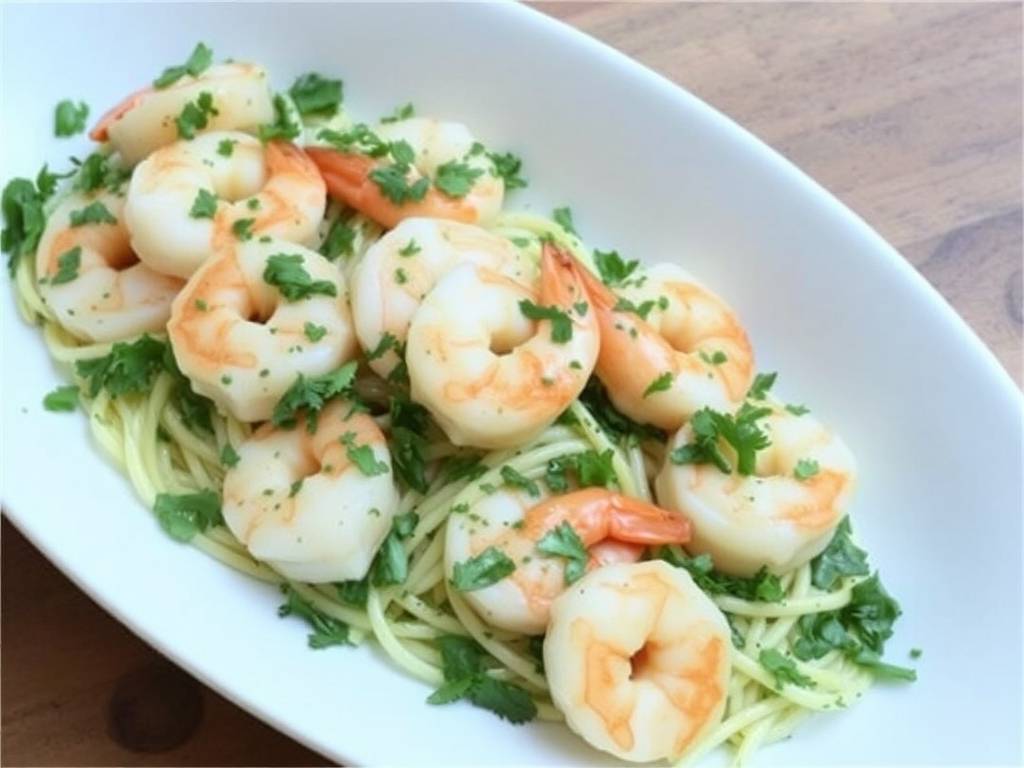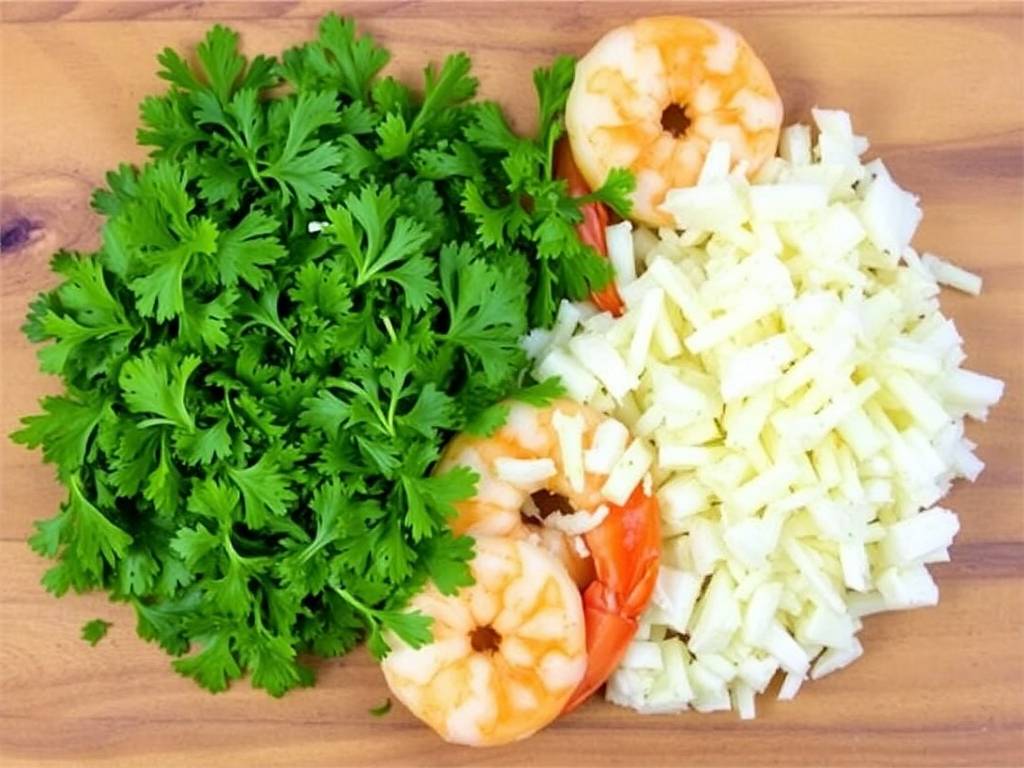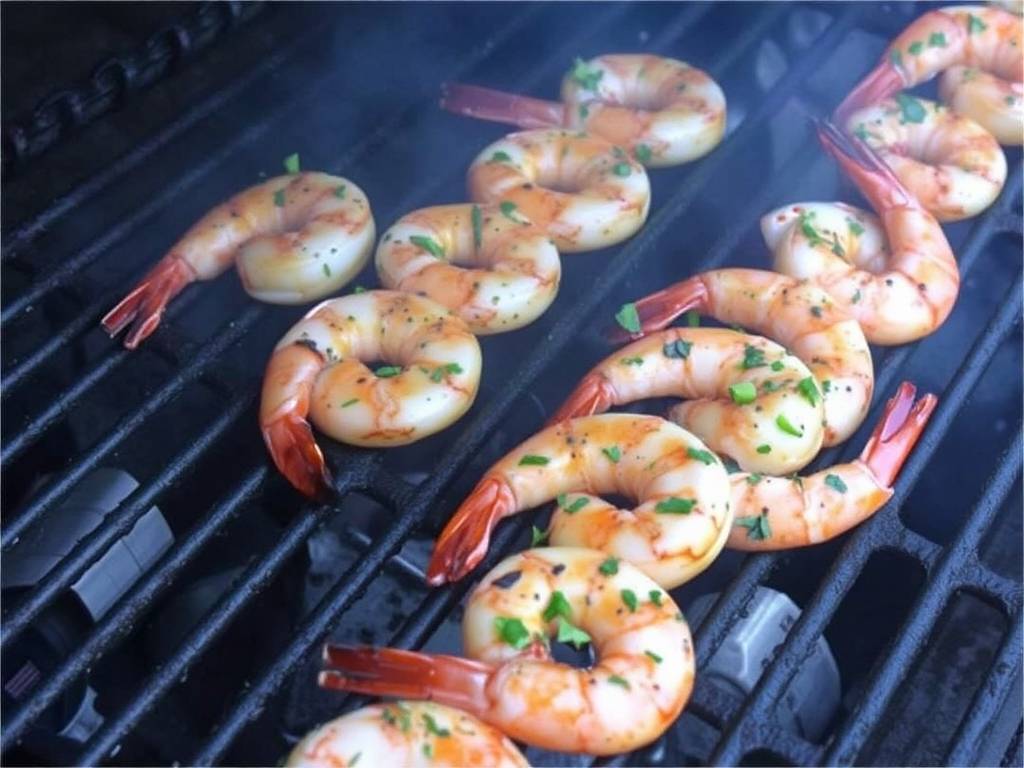The Art of Creating the Perfect Shrimp Scampi with Garlic and Parsley
There is a certain magic to a dish that is both elegantly simple and profoundly satisfying. In the pantheon of such culinary wonders, Shrimp Scampi holds a place of honor. This classic, with its roots in Italian-American cuisine, is a celebration of a few key ingredients, each playing a vital role in a harmonious symphony of flavor. It’s a dish that speaks of coastal breezes, bustling family kitchens, and the joy of sharing a meal that feels both rustic and refined. To master Shrimp Scampi with Garlic and Parsley is to understand the power of technique, the importance of quality, and the art of balancing bold flavors. This is not merely a recipe; it is a journey into the heart of what makes cooking a deeply rewarding experience.
The foundation of any great dish lies in its ingredients. For Shrimp Scampi, the shortlist is deceptive. Its power comes not from complexity, but from the impeccable quality of each component.
The Star: The Shrimp The choice of shrimp is paramount. While frozen shrimp are perfectly acceptable (and often preferable to "fresh" shrimp that have been previously frozen), the key is size and preparation. Opt for large (21/25 count per pound) or jumbo (16/20 count) shrimp. This size ensures a meaty, substantial bite that can stand up to the rich sauce without overcooking too quickly. The most critical step, often overlooked, is to pat the shrimp completely dry with paper towels after thawing. This is the secret to achieving a beautiful sear rather than a steam. For the ultimate flavor and texture, purchase shrimp with the shells on and devein them yourself. The shells can be reserved to make a quick, flavorful shrimp stock that can elevate your sauce to new heights, though this is an optional step for the purist.

The Aromatics: Garlic and Shallots Garlic is the soul of this dish. Do not be shy. You will want to use at least four to six large cloves, finely minced. The goal is to infuse the oil with its essence without burning it. A burnt garlic note can ruin the entire dish, so gentle heating is crucial. Alongside the garlic, a single shallot, finely diced, adds a subtle, sweet complexity that rounds out the sharpness of the garlic beautifully.

The Herbs: Parsley and Beyond Fresh, flat-leaf Italian parsley is non-negotiable. Its bright, clean, slightly peppery flavor is the perfect counterpoint to the richness of the butter and oil. You will need a generous half-cup, chopped just before using to preserve its vibrancy. While parsley is the classic herb, a hint of other fresh herbs can add dimension. A teaspoon of fresh chopped oregano or thyme, used sparingly, can introduce an intriguing layer of flavor.
The Liquids: Wine, Lemon, and Stock A dry white wine, such as a Sauvignon Blanc or Pinot Grigio, provides the acidic backbone of the sauce. It deglazes the pan, lifting the flavorful browned bits (the fond) from the bottom, and adds a necessary sharpness that cuts through the fat. Always use a wine you would enjoy drinking. The juice of one whole lemon, plus its zest, brings a necessary burst of freshness that lifts the entire dish. If you have gone the extra mile to make a quick shrimp stock from the shells, a quarter cup added with the wine will impart a profound depth of seafood flavor.
The Fats: Olive Oil and Butter This dish employs a combination of fats for a reason. Extra-virgin olive oil has a fruity, robust flavor and a higher smoke point, making it ideal for initially sautéing the shrimp and garlic. Unsalted butter, added later, contributes a luxurious, creamy texture and a rich, rounded flavor that oil alone cannot provide. The combination is what creates the iconic scampi sauce.
The Process: A Dance of Timing
The magic of Shrimp Scampi happens quickly. It is a dish that demands your full attention for a brief, intense period. Mise en place—having all your ingredients prepped and within arm's reach—is absolutely essential.
-
Preparation: Begin by ensuring your shrimp are thawed, peeled, deveined, and thoroughly dried. Season them generously with salt and black pepper. Mince your garlic, dice your shallot, chop your parsley, and have your lemon juice and zest ready. This entire cooking process will take less than ten minutes, so there is no time to pause and chop.
-
Searing the Shrimp: Heat a large skillet or sauté pan over medium-high heat. Add a two-count of olive oil (about two tablespoons). Once the oil shimmers and is hot, add the shrimp in a single layer, ensuring they are not crowded. Crowding the pan will cause them to steam. Cook for just 60-90 seconds per side, until they turn pink and opaque with a slight golden sear. The goal is to cook them about 80% of the way through. Immediately remove the shrimp from the pan and set them aside on a plate. This is the most common mistake—overcooking the shrimp by leaving them in the pan for the entire sauce-making process.
-
Building the Sauce: Reduce the heat to medium-low. In the same pan, you will see the beautiful fond left by the shrimp. Add another tablespoon of olive oil if needed, then add the minced garlic and shallot. Cook, stirring constantly, for just 30-60 seconds until they become fragrant. Do not let them brown. If they start to sizzle aggressively, remove the pan from the heat for a moment to cool it down.
-
Deglazing and Reducing: Pour in the white wine (and shrimp stock, if using) along with the lemon juice. Use a wooden spoon to scrape all the browned bits from the bottom of the pan. Allow the liquid to simmer and reduce by about half, which will take 2-3 minutes. This concentrates the flavor and cooks off the raw alcohol taste from the wine.
-
Finishing the Sauce: Turn the heat to low. Cut the butter into small pieces and whisk them into the sauce one or two at a time, allowing each piece to melt and incorporate before adding the next. This technique, called mounting with butter (monter au beurre), creates a lightly emulsified, glossy sauce. Once all the butter is incorporated, stir in half of the chopped parsley and the lemon zest. Taste the sauce and adjust the seasoning with salt and pepper. It should be bright, buttery, and perfectly balanced.
-
The Final Union: Return the par-cooked shrimp and any accumulated juices back to the pan. Toss them gently in the sauce for just 30-45 seconds, until they are heated through and coated beautifully. This final step finishes cooking the shrimp without overcooking them.
Serving and Variations
Shrimp Scampi is traditionally served over a bed of linguine or angel hair pasta. To serve it authentically, cook your pasta until al dente, reserve a cup of the starchy pasta water, and add the drained pasta directly to the scampi pan. Toss everything together, adding a splash of pasta water if needed to help the sauce cling to the noodles. The pasta water acts as a natural thickener and binder.
For a low-carb option, it is exquisite served over zucchini noodles (zoodles) or creamy polenta. A side of crusty, warm bread is essential for sopping up every last drop of the irresistible sauce. Garnish with the remaining fresh parsley and a final squeeze of lemon juice.
While the classic recipe is perfection in its own right, Shrimp Scampi is a wonderful canvas for creativity. A pinch of red pepper flakes added with the garlic will introduce a gentle, warming heat. For a touch of umami richness, a tablespoon of capers, rinsed and added with the wine, provides a briny punch. In the height of summer, diced fresh tomatoes stirred in at the end add a juicy sweetness.
Mastering Shrimp Scampi is about more than following a recipe; it is about embracing a philosophy of cooking where quality, technique, and respect for ingredients converge. It is a dish that proves that the most memorable meals are often the simplest ones, prepared with care and shared with gusto. So, gather your ingredients, sharpen your knives, and prepare to create a little bit of magic in your own kitchen.






发表评论